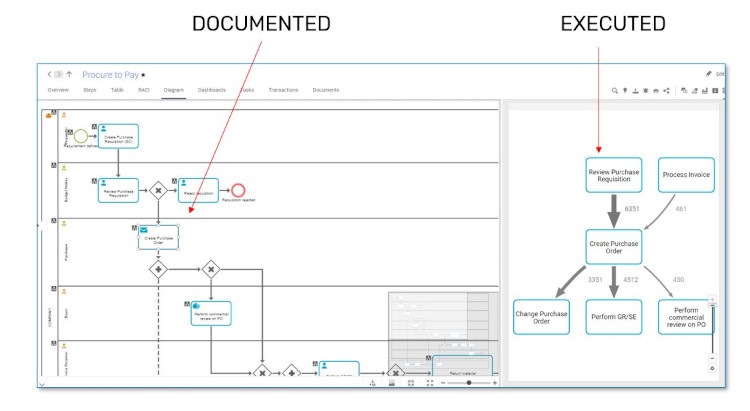Number 25! Time flies when you’re having fun and nothing makes me more happy than to be able to dedicate this episode to the use cases of process mining. I still remember my first process mining project some 6-7 years ago like yesterday and I can tell you that there have been some significant improvements done to the field of process mining. Now, this blog first and foremost aims to share practical and business related experiences, so I will not dive into all of the wonderful developments on process mining that take place in the academic world. For that, you can follow experts such as Wil van der Aalst, Hajo Reijers, Marlon Dumas and many more. Very often these developments find their way into the commercial process mining platforms anyway.
Having said that, let’s focus this week on the different use cases of process mining and I will be concentrating on the three major ones (there are many more, but some simply are too niche to list here). The way I see it (my personal view) is that there are 4 main use cases:
- Process Discovery
- Process Performance
- Process conformance
- Ad hoc analysis
First up, Process Discovery. Business processes are being executed all the time and everywhere. Some of them very infrequently and some every single day multiple times. For example, the year-end consolidation and reporting is done once a year (duh), the indirect procure to pay process can be executed 500K+ times a year (for a mid-sized manufacturing company). What you would like to know is how your staff has actually been executing some of these business process. Did they follow the steps of the process as it might have been documented already, or do you see some creative steps in order to circumvent an issue, or maybe even to cover up some fraudulent activities? In other words, how does reality look like!
In all of the process mining projects I’ve done by now, one thing they all have in common, the variation of the process execution is always far greater than expected. This results in the beautiful pictures of spaghetti like structure that is supposed to represent the actual execution of a business process over time. In the picture below I visualized the expectation of the variation by management (on the left) and the reality on the right. Perhaps we can make an NFT out of the right side picture ;-)
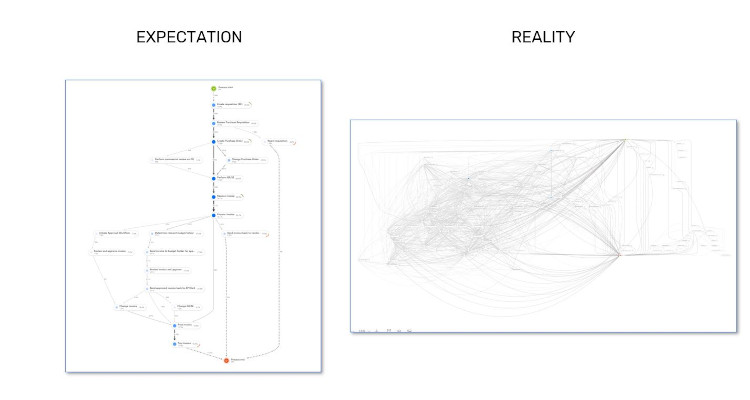
One very powerful application by the way is to have the documented process and the step by step execution mining results side by side in one view (without opening two applications and arrange them side by side). In the picture below you see the documented process on the left (with the Create Purchase Order activity selected) and the result of process mining on the right (filtered on that very same activity). This way you quickly come to the conclusion that the activity Process Invoice in reality is a predecessor for creating a purchase order, while on paper this should not happen.
The second main use case is around Process Performance and now that you know how your processes are executed, of course you also want to find out which variants (in process mining lingo a variant is one unique process execution) are the most efficient, or take the longest (and why) and these questions can be answered in multiple ways. For starters, you can take the approach that Lean Six Sigma and traditional BI have taken and you do the number crunching game. You create dashboard after dashboard and investigate the impact that certain dimensions (or factors) have on your primary metric (the one thing that you are analyzing, process cycle time is very often used here). One thing to keep in mind here, by the way, is that creating dashboards for analysis purposes or for consumption/sharing purposes are two very different things (but I can come back to that topic in a later blog). The other route you can take which is quite unique to process mining is to start using a root cause miner and this functionality allows you to select a symptom (something that’s wrong or off, or very good for that matter, it doesn’t have to be negative all the time) and then let the process mining engine crunch the numbers for you, keeping all the interdependencies of the process in the back of it’s artificial mind. This can help you find the answers to the 5xWHY question methodology and end up with the actual root cause for a problem.
Of course, the more traditional process performance use case where you create dashboards on management level to keep tabs on the way a process is being executed is also a well known use case. Nevertheless, the twist I would like to add to that is the additional benefit a manager can have when the dashboard he needs to check for the performance of his/her process(es) is seamlessley embedded in the same environment where he/she also manages the standard processes (why on earth would you want to have two separate environments for that). For an example see the picture below.
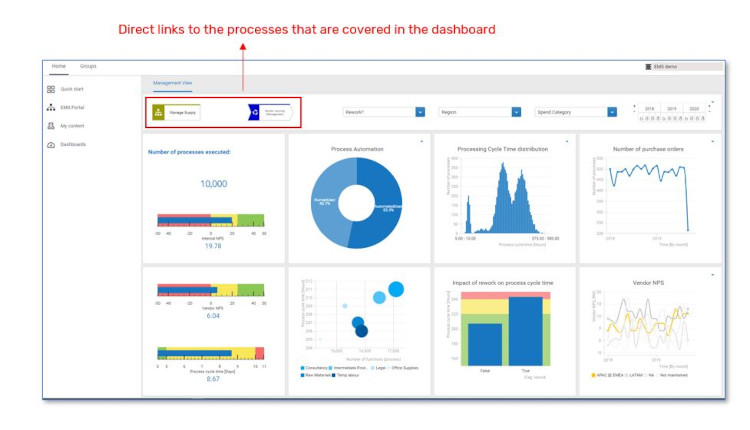
Did it follow the reference model completely, yes or no (resulting in either a conformant process or not)?
If it didn’t follow the reference model completely, to what degree did it (resulting basically in a number between 0-100 where a fully conformant process scores 100 and a completely different process would score 0)?
The combination of these two measures will give you great insight into the overall conformance of your staff towards the way you would expect them to work.
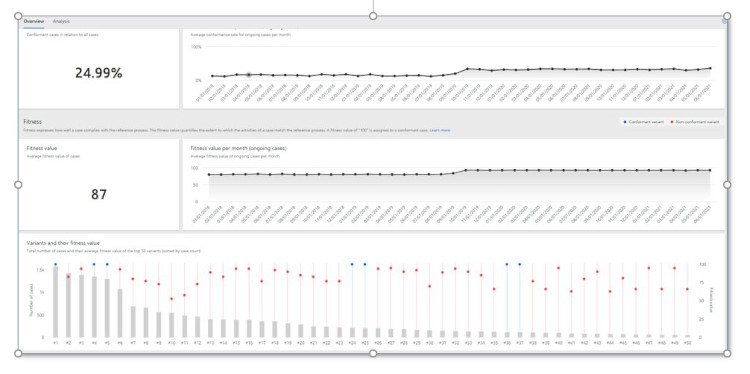
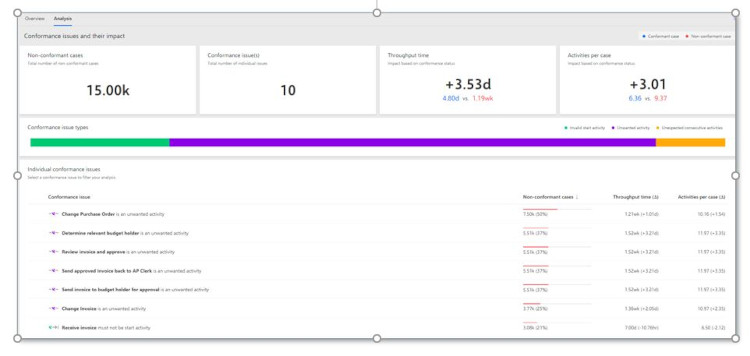
Sorry for the little bit longer blog compared to usual, but this is one of my favorite topics…
Just for clarity purposes, all screenshots comes from ARIS Process Mining and ARIS Connect, by SoftwareAG.
Enjoy your weekends
Ciao, Caspar



